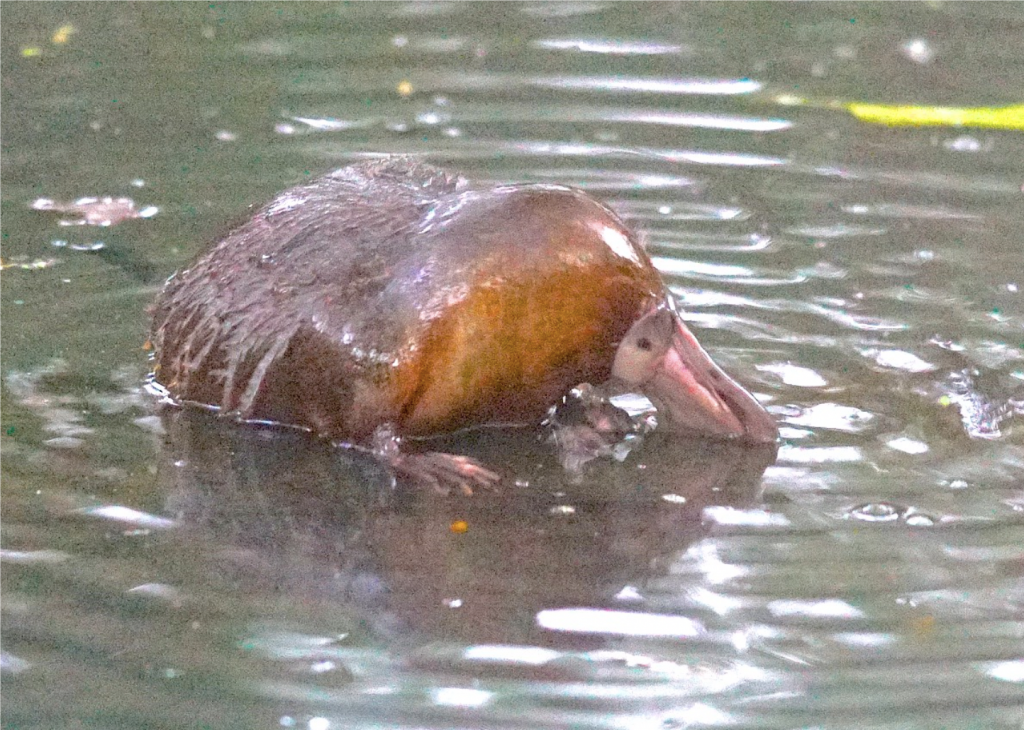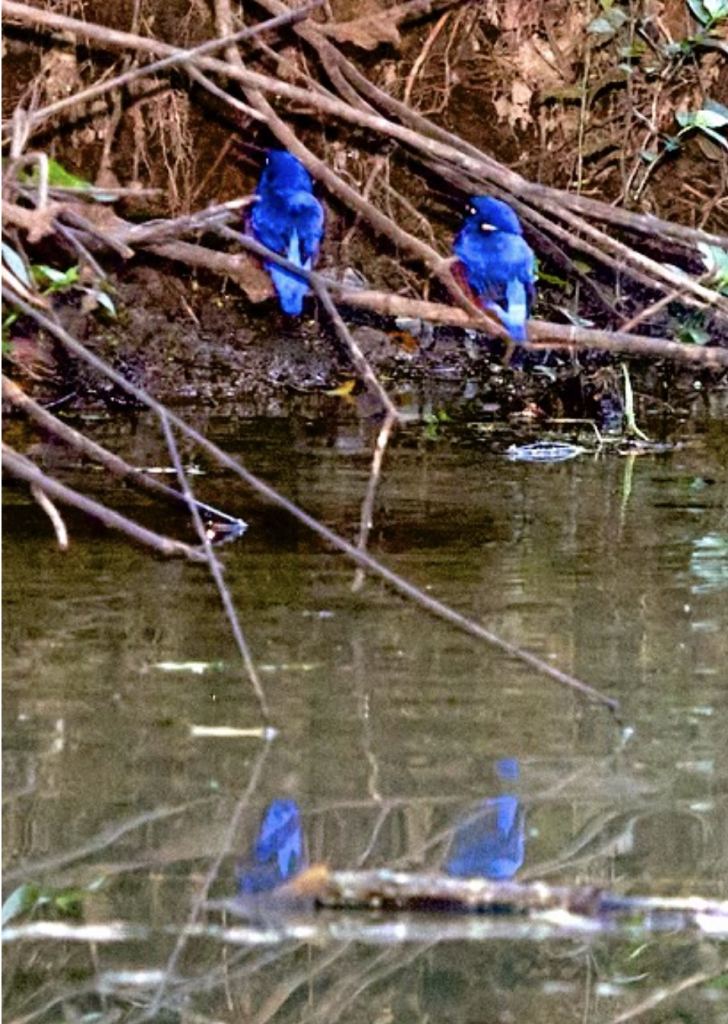There has been a lot of activity with the Platypus in the past week.
The female near my hide has been emerging from her den most mornings and again late in the afternoon. She comes out for two or three dives and then retreats. She doesn’t travel far and before she comes out there is a lot of stirring of the water as she is probably rearranging the plug of earth she has at the entrance of her den. I think she is mainly just getting wet to keep the moisture in the nest as the eggs and young Puggles need to be kept moist. She probably feeds a little on her outings, but at this stage she is probably relying on the reserves in her tail to supply the rich milk she exudes from her belly for the Puggles to grow.

Platypus having a scratch. Platypus vary in colour but most have lighter colour underneath. Photo: Ed Frazer
The real activity has been from two males. I noticed the female going towards the den and there was quite a commotion not far away. Two Platypus were fighting near the edge of the creek and water was splashing everywhere. It went on for only a few minutes and then one swam along the surface at high speed up the creek. A few seconds later the other followed. It was very unusual to see three Platypus at the same time as they are usually very solitary animals. While I am pretty sure the female now has hatched her eggs, it appears the males are still searching out mates. Unlike the females the males swim very quickly in large hops of about 30 metres, mostly on the surface with a long bow wave. The females make several dives about 45 seconds apart with a stream of bubbles showing where they are feeding. The dives travel only a few metres and they are easy to trace with their bubble stream.
All up I think we have 5 Platypus in the two large pools along our property and it will be interesting to see how many are sighted in the MCCG Platypus Survey in September. The males cover a kilometre or two of the creek and use several dens in different places so there is no guarantee they will be around our area in the survey.
Two Azure Kingfishers have been taking turns at digging out a nesting hole directly opposite my main hide. They do check out several possibilities, but this pair look serious about this hole behind a group of roots sticking out of the bank.
For more information on previous annual Platypus Surveys click here
Text and photos by Ed Frazer.


